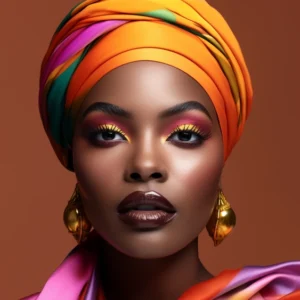In the age of digital empowerment, a new wave of creativity and self-expression has emerged through DIY (Do It Yourself) makeup. Homegrown beauty gurus, armed with passion, skill, and the desire to share their knowledge, have taken center stage on various online platforms. This article delves into the phenomenon of DIY makeup, exploring the rise of homegrown beauty gurus, their impact on beauty standards, and the evolution of the beauty community.
The DIY Revolution in Beauty
From Hobby to Expertise:
What began as a personal hobby has transformed into a thriving movement where individuals harness their passion for makeup to create content that resonates with a global audience. DIY makeup enthusiasts, often self-taught, use platforms like YouTube, Instagram, and TikTok to share their tips, tricks, and unique approaches to beauty.
Accessible Education:
- Tutorial Culture: DIY beauty gurus have cultivated a rich tutorial culture, providing step-by-step guides on makeup application, product reviews, and creative looks. This democratization of beauty education has empowered individuals to experiment with their makeup skills at their own pace.
- Inclusive Representation: Homegrown beauty gurus often represent a diverse range of backgrounds, ages, and gender identities, contributing to a more inclusive beauty landscape.
The Impact on Beauty Standards
Celebrating Diversity:
- Inclusive Beauty Standards: DIY beauty gurus challenge traditional beauty standards by celebrating and showcasing diverse faces, features, and styles. This inclusive representation encourages viewers to embrace their unique attributes.
- Ageless Beauty: The DIY beauty community embraces individuals of all ages, proving that makeup is a form of self-expression with no age limits. Older beauty gurus share their expertise, breaking away from ageist beauty norms.
Real Faces, Real Stories:
- Authentic Beauty: DIY beauty gurus often showcase “real faces” by embracing imperfections and demonstrating that makeup is a tool for self-enhancement, not a mask to hide behind.
- Body Positivity: Beyond facial beauty, DIY gurus contribute to the body positivity movement by normalizing various body shapes, sizes, and skin conditions.
Evolution of the Beauty Community
Community Engagement:
- Interactive Platforms: DIY beauty gurus actively engage with their followers through comments, direct messages, and interactive content, fostering a sense of community and connection.
- Collaborations and Challenges: Collaborative projects and challenges within the DIY beauty community create a supportive environment, encouraging creativity and shared experiences.
Breaking Beauty Taboos:
- Experimental Makeup: DIY beauty gurus often push boundaries by experimenting with unconventional makeup looks, challenging preconceived notions of beauty and encouraging viewers to step outside their comfort zones.
- Mental Health Advocacy: Some beauty gurus use their platforms to address mental health struggles, promoting self-care and self-love within the beauty community.
Challenges and Considerations
Authenticity Concerns:
- Pressure to Conform: Despite promoting authenticity, DIY beauty gurus may face pressure to conform to popular trends or maintain a certain aesthetic to gain followers and sponsorships.
- Filter Culture: The prevalence of filters and photo-editing tools may inadvertently contribute to unrealistic beauty standards, challenging the authenticity of DIY beauty content.
Consumerism and Product Promotion:
- Product Oversaturation: The abundance of makeup products featured in tutorials and reviews may contribute to a culture of consumerism, leading followers to feel pressured to purchase an extensive array of products.
- Unbiased Reviews: Maintaining objectivity in product reviews may be challenging when beauty gurus receive free products or sponsorships from brands, potentially influencing their opinions.
Future Trends and Innovations
Sustainability and Conscious Consumption:
- DIY Beauty Recipes: The future may see an increase in DIY beauty gurus sharing recipes for homemade beauty products, aligning with the growing trend of sustainability and conscious consumption.
- Eco-Friendly Practices: Beauty gurus may advocate for eco-friendly practices, such as reducing single-use packaging or promoting cruelty-free and sustainable beauty brands.
Virtual Try-Ons and Augmented Reality:
- Technology Integration: DIY beauty gurus may explore innovative ways to integrate technology, such as virtual try-ons and augmented reality, providing viewers with interactive and personalized experiences.
- AI Beauty Assistants: The introduction of AI-powered beauty assistants may assist DIY beauty enthusiasts in personalized makeup recommendations and tutorials tailored to individual features.
Advocacy for Mental Health and Wellbeing:
- Holistic Beauty Content: DIY beauty gurus may evolve their content to include more discussions on mental health, self-care, and overall wellbeing, fostering a holistic approach to beauty.
- Empowerment Campaigns: Beauty gurus may initiate empowerment campaigns that encourage followers to embrace their unique features and promote mental health awareness within the beauty community.
Conclusion
The rise of homegrown DIY beauty gurus signifies a transformative shift in the beauty industry. Beyond makeup application techniques, they have become influential figures promoting inclusivity, diversity, and authenticity. As the beauty community continues to evolve, DIY beauty gurus are likely to play a pivotal role in shaping not only makeup trends but also the broader perception of beauty as a celebration of individuality and self-expression.



